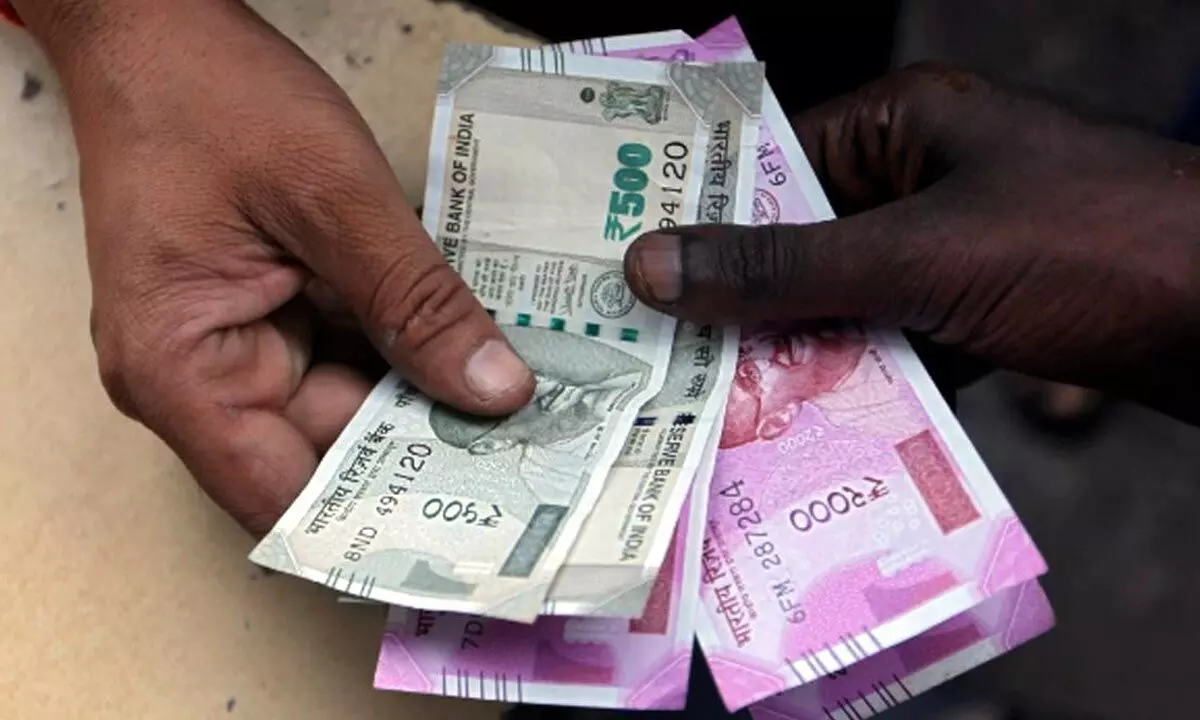Why India must diversify its forex basket
Forget, for the moment, about what the Union Finance Minister Nirmala Sitharaman said about the free fall of rupee and appreciation of dollar, the fact is that the RBI is walking a tightrope between defending the rupee, while spending, maintaining the levels of foreign exchange.
image for illustrative purpose

Forget, for the moment, about what the Union Finance Minister Nirmala Sitharaman said about the free fall of rupee and appreciation of dollar, the fact is that the RBI is walking a tightrope between defending the rupee, while spending, maintaining the levels of foreign exchange. Mind you that the forex reserves had been dwindling for quite some time and by September 30, reserves had decreased by $4.854 billion to $532.664 billion.
India's forex reserves rose marginally to $532.87 billion in the week through October 7. India's reserves rose by $204 million from the previous week, the first increase since the week ended July 29. The earlier declines in the reserves can largely be attributed to the valuation changes arising from an appreciating dollar. It is also true that rupee weakened against the dollar in the wake of a hotter-than-expected inflation number. The rupee settled at 82.35 on last Friday, having touched another record low of 82.68 on the previous Monday.
Mind you that the country needs foreign exchange to pay for importing crude oil, the lifeline of transport and logistics, vaccine supplies, steel and auto components. Accumulation of reserves gives strength to country's balance sheet.
Going by RBI data, India's forex reserve moved up by $2.865 billion to a record high of $592.894 billion for the week ended May 21, 2021, driven mostly by gold and currency assets. Earlier, the forex kitty had been at its peak at $590.185 billion during the week ended January 29, 2021. Subsequently, India's reserves reached a peak of $645 billion in October 2021, but have since dwindled mainly on account of the depreciation of the rupee amid the global economic crises.
When India's forex reserves exceeded $600 billion mark, that reflected a success story. There is no doubt whatsoever that this kind of dollar reserves certainly gives India macroeconomic stability, it needs. It was believed that the country had enough to pay for 18 months of imports, unlike in 1991, when dismal forex reserve (only for two weeks' reserves) had led to a crisis.
Mind you that the foreign currency assets comprise the effect of appreciation or depreciation of non-US units like the euro, pound and yen held in the foreign exchange reserves, all expressed in dollar terms. The balance sheet of a central bank primarily comprises government bonds and foreign currency holdings on the asset side, and cash with the public on the liability side. They are also in the form of bonds - the US government (or some other foreign nation's) securities. And the apex bank (RBI) earns interest on all bonds - foreign or domestic - that it holds, which is its interest income. Interestingly, the central bank earns interest on its assets and does not pay interest on its liabilities.
For a large number of countries, their forex stock pile is all, but the accumulation from years of earning more dollars than they spend. However, for India, it is just the opposite. India is possibly the only large Asian country with a current account deficit (CAD). This clearly means that the country imports much more than it exports. And nevertheless, India has large foreign exchange reserves. This can only be explained by the fact that India's CAD is offset by a large influx of capital flows, which comes through foreign portfolio investors (FPI) or as foreign direct investment (FDI). However, the government must remember that it doesn't take long for the stock market inflows, especially FPI, to make an about turn, suddenly and abruptly, because they often tend to be jittery and risk-averse. NRIs can withdraw large dollar deposits suddenly as well. At least that's what the 1990 experience suggests. One must also remember that large dollar pile earns little interest. And questions can also be raised if it is a healthy sign to keep purchasing power of Indian importers dependent on fickle foreign investors? RBI's balance sheet, which is measured in rupees, gets bloated by large dollar pile.
Many economists would therefore like to argue that India must weigh options to diversify its forex holding away from the dollar. The country must examine the optimal size of foreign reserves to meet its needs and shrug off excess reserves.

